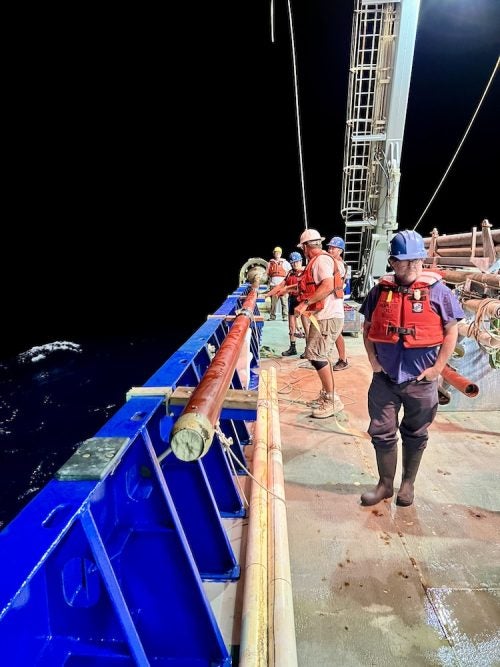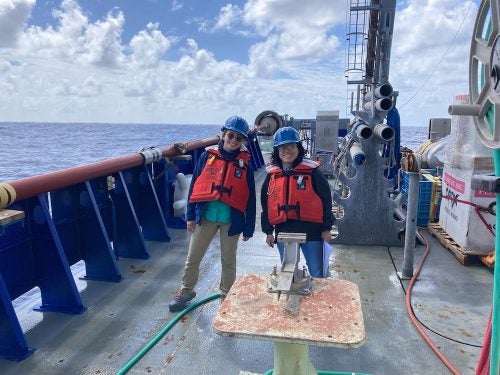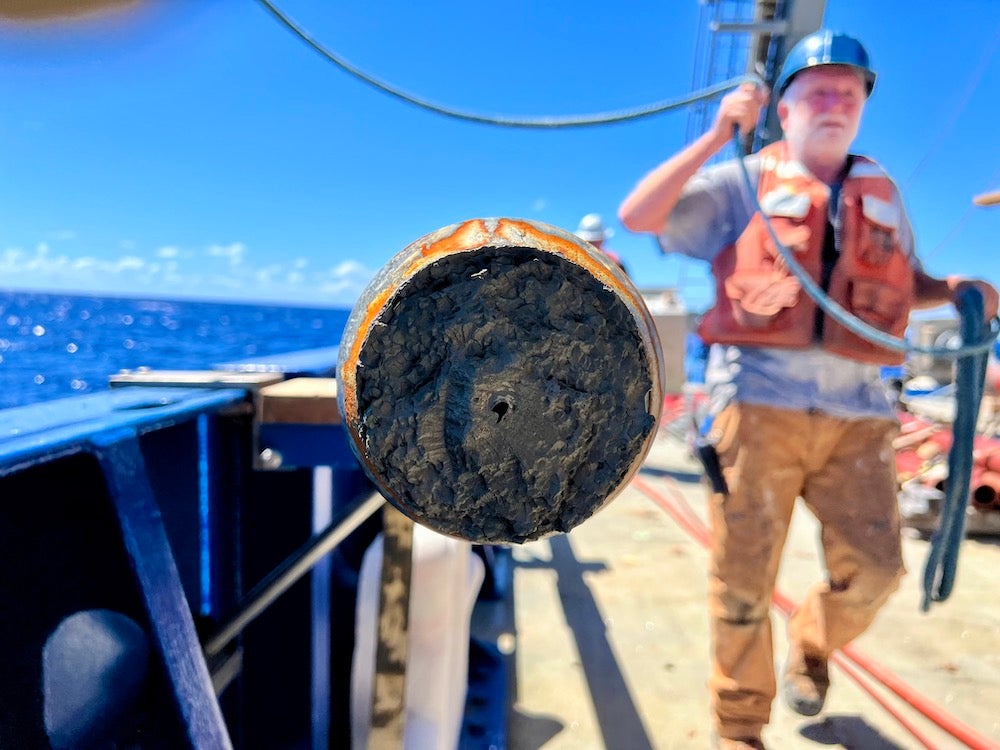April 5, 2022
How does life exist far beneath the ocean floor in one of the deepest places on Earth? A group of scientists and students are in waters off Puerto Rico to shed more light on that question.
“We want to study how organisms that live beneath the seafloor handle the pressure of their environment,” said Steve D’Hondt, University of Rhode Island professor of oceanography. “We’ll be taking sediment cores from water depths as shallow as 50 meters and as deep as nearly eight-and-a half kilometers.
“The main value of the work is to know more about the how bacteria and other microbes respond to the literal pressure that they face in the world around us. There are always potential downstream applications, but the reason we do this is to gain a better understanding of how microscopic communities engage in the world around them.”
The team, which includes URI graduate student Kotachi Liu, will examine the microbial communities that live meters beneath the seafloor to see how they’ve adapted to their local pressure conditions.
The three-week trip aboard the Armstrong, operated by the Woods Hole Oceanographic Institution, will take the science party to an area several hours from San Juan. The voyage is a return visit for D’Hondt, who was part of the first such team to conduct drilling and quarrying expeditions in the area back in 2001.

D’Hondt says the subsurface organisms they’ll be studying may have begun life at the ocean floor. Then, over millennia, they were buried by material that gradually covered the bottom. “On the Puerto Rico side of the Trench, there’s sediment that’s always sloughing off the shelves of Puerto Rico and going down into the abyss. And then out in the open ocean, on the other side of the trench, you’ve got dust falling out of the air, you’ve got organisms in the ocean dying and creating skeletons. You’ve got volcanic ash falling out. Plus, there’s a constant rain of cosmic debris, like micro meteorites, and all that stuff accumulates on the sea floor.
“The sediment accumulation rates can vary from decimeters a year, to tens of decimeters a year, to tens of centimeters every thousand years, depending on where you are. But in all those places it’s just stuff that lands in the ocean and then sinks that eventually buries what’s below.
“We’ll find organisms that live in sediments of different ages, and one of the things that’s relevant to us is that as you get farther and farther from the sea, the chemistry of the sediment changes. So you’ll have oxygen in the sediment that’s close to the ocean. Then as microbes breathe the oxygen, they use it up. And then other microbes breathe nitrates and use it up. And then as we get deeper in the sediment, they’re using more obscure oxidants, like oxidized iron or oxidized sulfur. And then as we get even deeper, we’ll reach a point where they’re literally using carbon dioxide. We’ll be taking these microbes from these different chemical environments with these different metabolic capabilities and looking to see how they react to pressure.”
Those tests will be done with the help of collaborators from the Scripps Institution of Oceanography in California, the University of Washington, and. from Munich, Germany. The plan is to take small samples of the sediment from different depths and place some of the organisms under pressure and others that are not.
“We will essentially extract the RNA and the DNA from those parallel experiments, and we’ll look for genes that are expressed by the presence of RNA under pressure that are not expressed just sitting on the lab bench. That will tell us that those genes are pressure sensitive, and then we’ll have to figure out what those genes code for. We’ll get a better understanding of how the microbes respond to the pressure.”

Joining the seven URI faculty members on the expedition will be seven graduate and undergraduate students. “The samples that we take and the work that we do on the ship is probably going to feed directly into their thesis work at some level. It will become part of what they produce as they move on to their Ph.D. and they publish their first papers. The undergrads who are going will have an opportunity to participate in the research enterprise, and to go on an expedition, and hopefully co-author some research papers and publications. For them, it’s a step on the path to becoming more deeply embedded in science and technology.”
Originally published on March 14, 2022 by URI News.

